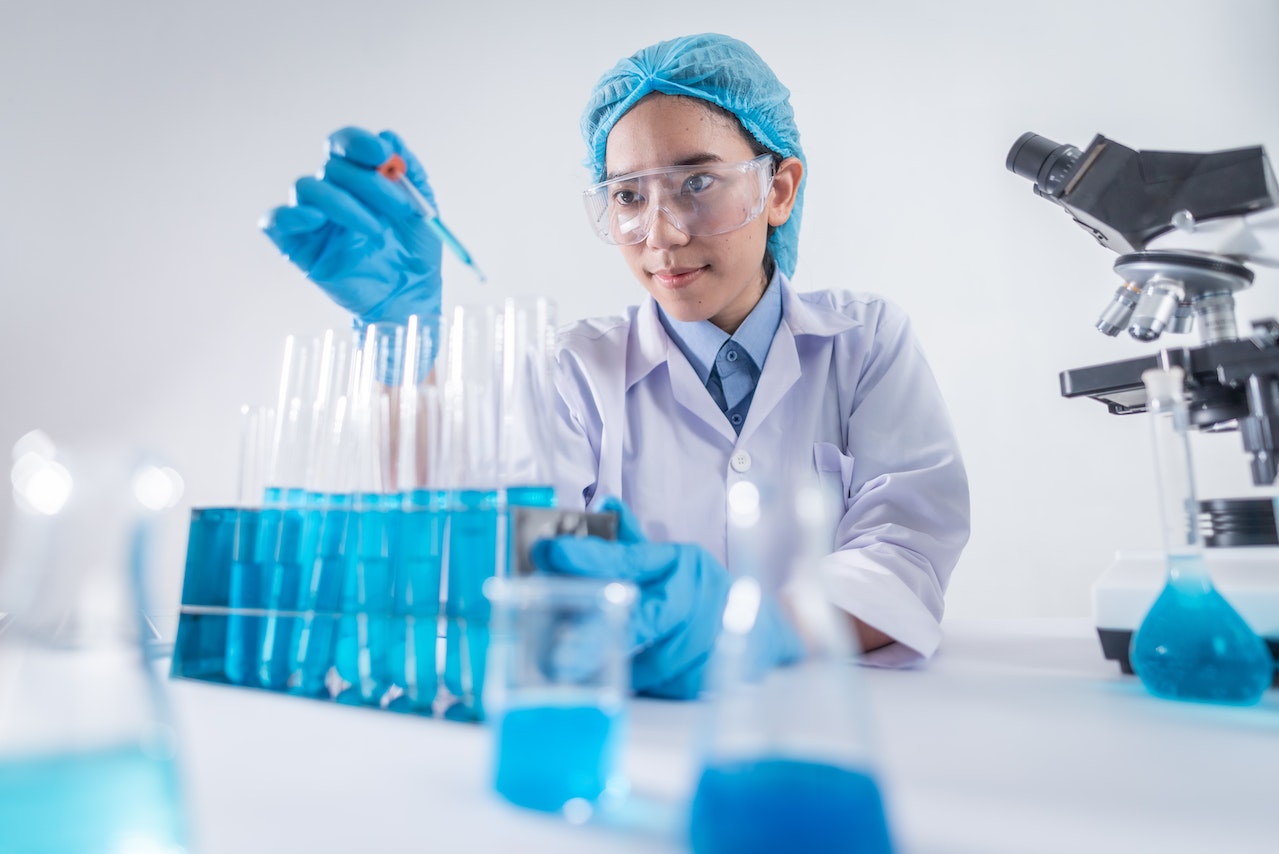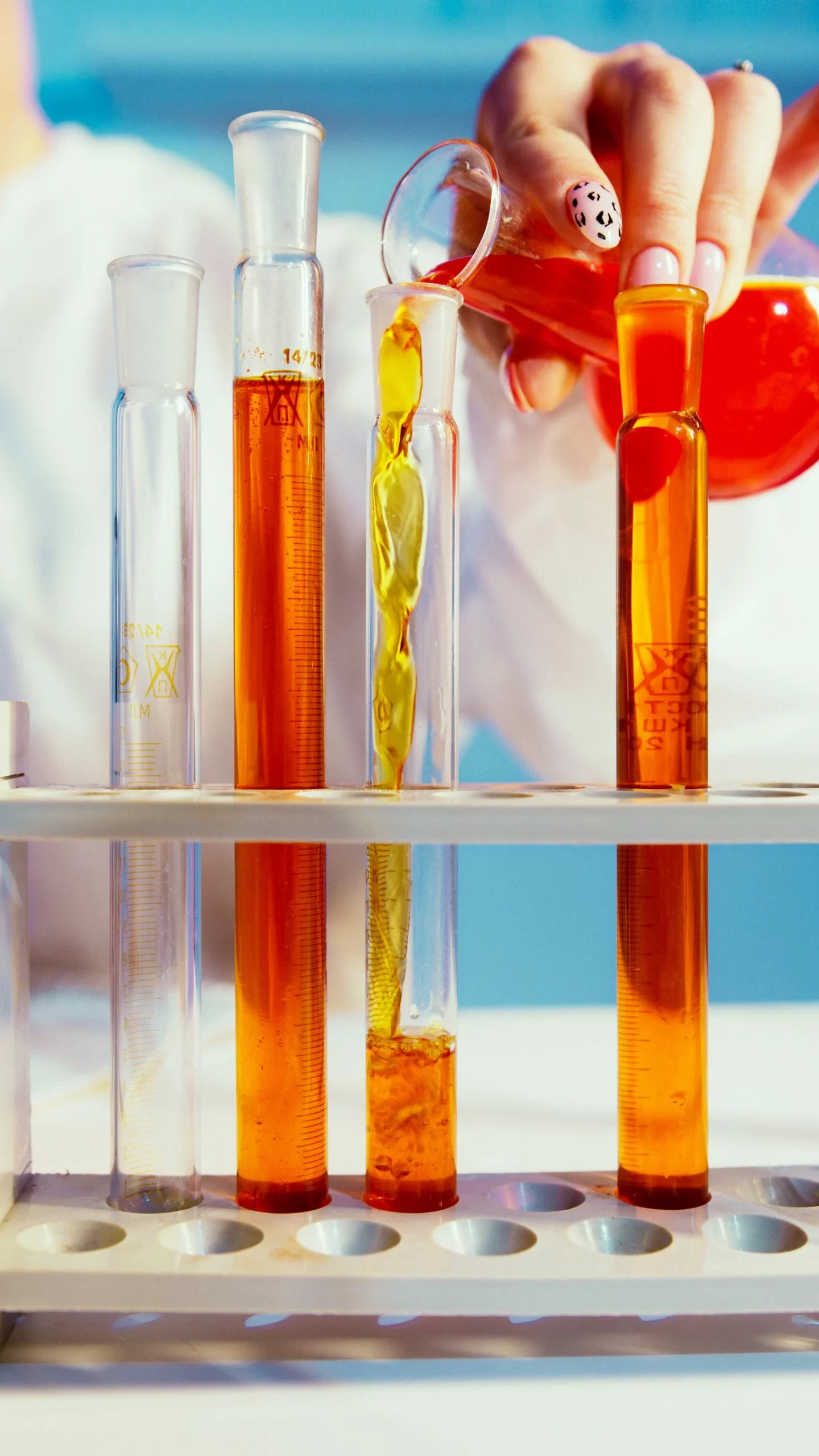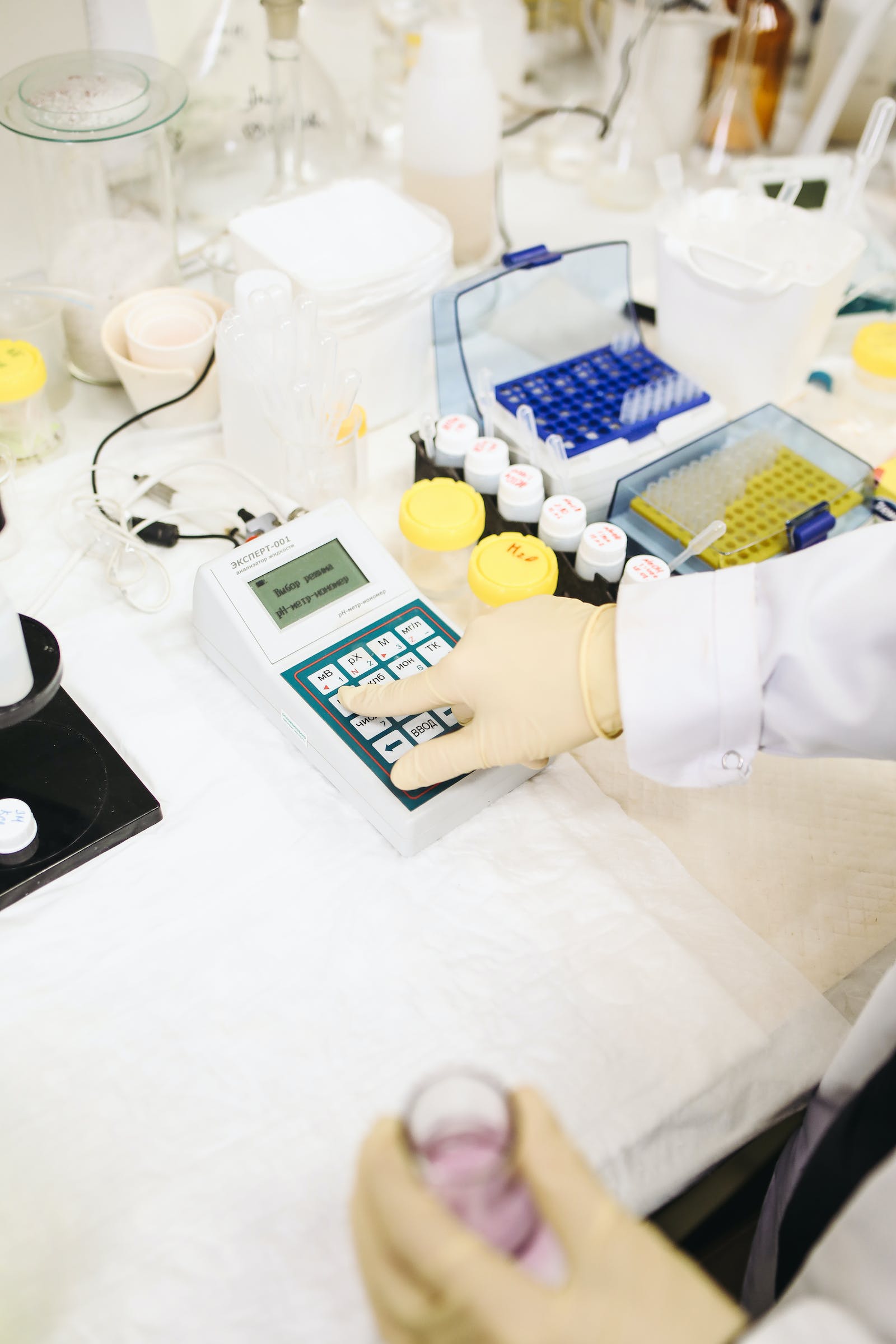Recombinant DNA technology, the modification and assembly of genetic material from various sources to create new gene combinations, has revolutionized various sectors ranging from medicine and health care to agriculture and food production. One of the major applications of this technology is the design and production of recombinant proteins, such as recombinant human insulin for the treatment of patients with diabetes. This article aims to provide a comprehensive guide for beginners to understand and navigate the complex yet fascinating world of recombinant protein expression, purification, and analysis.
Understanding Protein Expression
 Traditionally, proteins were only expressed and harvested from their source organism. With recombinant DNA technology, recombinant proteins from any source organism can be designed for expression in a chosen host. E. coli has gained popularity as an expression host due to its rapid growth, easy genetic manipulation, and well-understood biochemistry.
Traditionally, proteins were only expressed and harvested from their source organism. With recombinant DNA technology, recombinant proteins from any source organism can be designed for expression in a chosen host. E. coli has gained popularity as an expression host due to its rapid growth, easy genetic manipulation, and well-understood biochemistry.
Usually, the gene of interest (GOI) is cloned into a plasmid which can then be transformed, or introduced, into E. coli by methods such as heat shock, which utilizes high temperatures to increase membrane permeability to facilitate plasmid uptake. Expression of the GOI is controlled by a promoter region upstream of the GOI. The T7 promoter is commonly used to regulate gene expression due to the high selectivity and affinity of the T7 RNA polymerase to the T7 promoter, allowing for high expression levels of the GOI to be achieved. Upon induction of protein expression, the GOI is transcribed into mRNA and then translated into the protein of interest (POI).
Induction typically takes place when the bacterial culture reaches a high enough absorbance at 600nm (OD600) such that the cells are near the end of the log, or exponential, phase. This ensures that protein production capacity is maximized since cell growth will be halted once the cells have been induced as most of the cells’ resources will be used towards production of the recombinant protein.
Protein Purification with Immobilized Metal Affinity Chromatography (IMAC)
 Purification is the next crucial step in the production of recombinant proteins to facilitate the removal of any host proteins and impurities. Immobilized Metal Affinity Chromatography (IMAC) has gained popularity as a purification method due to its high selectivity, scalability, and compatibility with a wide range of chemicals and buffer conditions. The use of IMAC requires the addition of an affinity tag, such as a His tag, to the recombinant protein. The placement location of the affinity tag (e.g. on the C- or N-terminus of the POI) should be considered in the process of designing the recombinant protein and is accomplished in the cloning stage.
Purification is the next crucial step in the production of recombinant proteins to facilitate the removal of any host proteins and impurities. Immobilized Metal Affinity Chromatography (IMAC) has gained popularity as a purification method due to its high selectivity, scalability, and compatibility with a wide range of chemicals and buffer conditions. The use of IMAC requires the addition of an affinity tag, such as a His tag, to the recombinant protein. The placement location of the affinity tag (e.g. on the C- or N-terminus of the POI) should be considered in the process of designing the recombinant protein and is accomplished in the cloning stage.
In IMAC, the lysate (mobile phase) containing the soluble fraction of the POI passes through a column of resin beads (stationary phase) that is charged with metal ions (usually Co2+ or Ni2+). The affinity tag (primarily histidine residues) on the POI reacts strongly with metal ions in the resin, allowing for specific binding of the POI to the beads. In theory, the impurities and other host proteins in the lysate lacking the affinity tag will not bind and pass out of the column. However, as impurities may also contain histidine residues, non-specific binding of impurities to the resin may also occur, resulting in some contamination. Washing the resin column with low concentrations of imidazole (e.g. 2-10mM) can usually help wash away most of the impurities, and elution of the POI is achieved by switching to a higher concentration of imidazole (e.g. 200mM), allowing for the successful separation of impurities from the POI.
Protein Analysis using SDS-PAGE
 After purification, it is crucial to verify the size and purity of the POI using Sodium Dodecyl Sulfate Polyacrylamide Gel Electrophoresis (SDS-PAGE). The negatively charged SDS causes protein denaturation and coats the unfolded proteins with a negative charge. This imparts a uniform charge-to-mass ratio, causing proteins to migrate through the polyacrylamide gel at different rates, depending on their size. Upon staining, distinct bands representing different proteins appear, providing a visual representation of purity and size.
After purification, it is crucial to verify the size and purity of the POI using Sodium Dodecyl Sulfate Polyacrylamide Gel Electrophoresis (SDS-PAGE). The negatively charged SDS causes protein denaturation and coats the unfolded proteins with a negative charge. This imparts a uniform charge-to-mass ratio, causing proteins to migrate through the polyacrylamide gel at different rates, depending on their size. Upon staining, distinct bands representing different proteins appear, providing a visual representation of purity and size.
SDS-PAGE also helps in the evaluation of the success of expression/purification. For this purpose, samples need to be collected for SDS-PAGE during different stages of the purification process:
- After centrifuging the sonicated lysate, a sample of the pellet (containing the insoluble fraction of the POI) and a sample of the supernatant (containing the soluble fraction of the POI) is collected in separate tubes. Running these samples on a gel can indicate the overall level of expression of the POI since the sum of expression in the soluble and insoluble fractions makes up the total expression. The expression level of a protein can be visualized by the thickness and intensity of its band on the gel. Comparing the POI band in your gel’s pellet and supernatant lanes would indicate whether the POI is mostly soluble or insoluble.
- After the supernatant is passed through the resin beads in the IMAC column, the solution that comes out from the other end of the column is known as the flowthrough. The flowthrough contains all of the excess POI, host proteins and impurities that did not bind to the beads. A sample of the flowthrough is also collected for SDS-PAGE analysis. Comparing the POI band in the supernatant and flowthrough lanes of your gel may indicate the binding affinity of the POI to the beads. For instance, if the POI band in the flowthrough lane is noticeably thinner/less intense relative to the POI band in the supernatant lane, this would indicate that most of the POI successfully bound to the beads (high binding affinity).
- Samples of the washes are collected for SDS-PAGE to determine the optimal imidazole wash concentration. When the beads are washed with low concentrations of imidazole, both the impurities and the POI could be washed off. In theory, the POI is less susceptible to being washed off at low concentrations of imidazole since they have an affinity tag (e.g. His tag) containing multiple, repetitive histidine residues which interact strongly with metal ions in the resin beads. The impurities and other host proteins may contain some histidine residues which will allow for weaker, non-specific interactions with the beads. Comparing the thickness of the POI band relative to the other bands (impurities) in each of the wash lanes on your gel may indicate which of your imidazole concentrations is optimal for washing. The optimal wash is one that washes away most impurities without washing off a significant amount of your POI.
- Samples of the eluted fractions are also collected and run on an SDS-gel to help you determine how to pool your fractions. Usually, fractions with high yield of the POI are pooled, and fractions with similar POI purity and concentration are pooled together.
Summary: From Expression to Analysis
Recombinant protein production starts with the cloning of the GOI into a plasmid where its expression is controlled by an upstream promoter. The design of the GOI as well as placement of any affinity tags takes place during the cloning stage. Transformation allows for uptake of the GOI by the selected expression host. The expression host culture is allowed to grow and reach a high enough OD600 before protein expression is induced. Upon induction, expression of the POI is initiated, and cell growth is halted. Time is given for expression to take place before cells of the expression host are harvested and stored in the freezer until the POI is ready to be purified. For purification, the cells are lysed, and the lysate is passed through a resin packed IMAC column to allow for specific binding interactions to take place between the beads and tagged POI. After washing the beads to remove impurities, the POI is eluted, collected, and analyzed by SDS-PAGE, where it should appear as a distinct band at the correct molecular weight.
Practical Approaches and Troubleshooting Insights
Like any scientific endeavor, protein expression, purification, and analysis can come with challenges. These may include low protein expression levels, poor protein solubility, poor binding of the protein to the beads, and poor separation of impurities from the POI. Troubleshooting often involves optimizing the expression conditions, using different types of IMAC resin (beads), and modifying plasmids or the location of affinity tags.

- The speed of protein expression is largely influenced by temperature. Increasing the temperature (e.g. to 37°C) speeds up protein expression, allowing more proteins to be made. High rates of expression could introduce more protein folding errors, which could lower the solubility of the protein. Lowering the temperature slows down protein expression, resulting in less proteins being made. However, lower rates of expression also lower the occurrence of folding errors, ensuring that more proteins that should be soluble in their folded form are being folded properly and remain soluble.
- There are many reasons why the binding affinity of a tagged protein may be low, resulting in low protein yield. It is possible that the current placement of the affinity tag prevents it from being accessible for binding interactions with the IMAC resin. Changing the location of the tag (e.g. moving it from the N-terminus to the C-terminus) may resolve this issue.
- The type of IMAC resin used for purification may also affect protein recovery. Cobalt charged TALON beads have a higher specificity for binding, sacrificing protein yield for higher protein purity. Nickel-charged INDIGO beads have a lower specificity for binding, sacrificing protein purity for higher protein yield.
- To improve the separation of impurities from the POI, gradient elution may be used after the washing step for protein elution. Gradient elution refers to the gradual, linear increase in imidazole concentration as elution proceeds. Since different impurities may have different degrees of non-specific binding affinity to the beads, gradually increasing the imidazole concentration allows for the gradual removal of impurities. This ensures that when the imidazole concentration is high enough to elute the POI, the amount of impurities that are simultaneously eluted is minimized.
Conclusions and Further Reading
This article has touched upon the key steps involved in the journey of a protein from expression to analysis. Recombinant protein technology is a vast and evolving field, and the tools discussed here are only the beginning. For those interested in delving deeper, resources like the “Protein Expression and Purification” series by Elsevier or the “Methods in Enzymology” book series offer a wealth of information.
